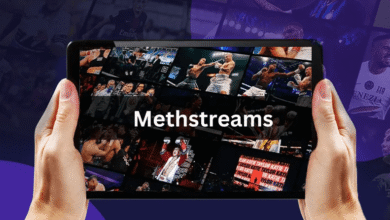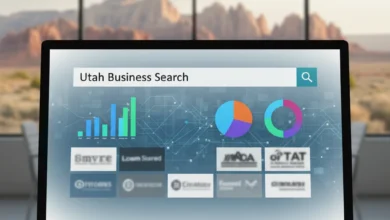ECMISS: Revolutionizing E-Commerce Success

You’ve probably heard the term “ECMISS” floating around in e-commerce circles, but what does it actually mean? ECMISS stands for E-Commerce Mobile Integration and Strategic Systems, a framework designed to streamline online business operations through a blend of mobile technology, data-driven strategies, and seamless system integration. It’s not just another buzzword; it’s a practical approach that’s helping businesses—big and small—thrive in the competitive digital marketplace. Think of it as a blueprint for creating a cohesive, customer-focused online shopping experience that leverages the power of mobile devices and smart systems.
At its core, ECMISS is about making e-commerce more accessible, efficient, and engaging. It’s rooted in the reality that over half of online shopping now happens on mobile devices. Businesses that fail to optimize for mobile or integrate their systems effectively risk losing customers to competitors who do. ECMISS provides a structured way to address these challenges, combining technical know-how with strategic planning. It’s less about reinventing the wheel and more about making sure all the wheels—mobile apps, payment systems, customer service—are spinning in sync.
Table of contents
- Why ECMISS Matters in Today’s E-Commerce Landscape
- The Role of Mobile in ECMISS
- Strategic Systems: The Glue That Holds It Together
- How ECMISS Enhances Customer Experience
- Building Trust Through Security and Transparency
- Implementing ECMISS: Practical Steps for Businesses
- Overcoming Common Challenges
- ECMISS and SEO: A Winning Combination
- Conclusion
- FAQs
Why ECMISS Matters in Today’s E-Commerce Landscape
The e-commerce world moves fast, and staying ahead means adapting to how customers shop. With mobile commerce projected to account for over 60% of global e-commerce sales by 2027, ignoring mobile optimization is like leaving money on the table. ECMISS steps in to bridge this gap, offering a roadmap for businesses to create mobile-first experiences that don’t just meet but exceed customer expectations. It’s not enough to have a website that looks good on a phone; you need systems that work together to deliver speed, security, and personalization.
Beyond mobile, ECMISS emphasizes integration. Siloed systems—where your inventory doesn’t talk to your payment gateway or your customer service platform—create friction. Customers notice when things don’t work smoothly, whether it’s a clunky checkout process or a product listed as “in stock” that’s actually sold out. ECMISS pushes for a unified approach, ensuring that every part of your e-commerce operation communicates seamlessly. This isn’t just about tech—it’s about building trust and keeping customers coming back.
The Role of Mobile in ECMISS
Mobile isn’t just a trend; it’s the backbone of modern e-commerce. People shop on their phones while waiting for coffee, commuting, or lounging at home. ECMISS recognizes this shift and prioritizes mobile optimization as a non-negotiable. This means more than just a responsive website. It’s about creating apps or mobile experiences that load quickly, feel intuitive, and make shopping effortless. For example, a well-executed ECMISS strategy might include a mobile app that syncs with your website’s inventory in real time, offers personalized product recommendations, and supports one-tap payments.
The data backs this up: studies show that mobile users are more likely to abandon a purchase if a site takes more than three seconds to load. ECMISS tackles this by advocating for lightweight designs, optimized images, and efficient coding practices. It’s not just about speed, though. Mobile integration also means leveraging features like push notifications to re-engage customers or using geolocation to offer location-specific deals. These small touches add up, making customers feel seen and valued.
Strategic Systems: The Glue That Holds It Together
If mobile is the heart of ECMISS, strategic systems are the glue. This part of the framework focuses on connecting the dots between your e-commerce platforms—think inventory management, customer relationship management (CRM), and analytics tools. Without integration, you’re stuck with manual processes that waste time and increase the chance of errors. Imagine a customer ordering a product online, only to get an email later saying it’s out of stock because your inventory system didn’t update. That’s a fast way to lose trust.
ECMISS encourages businesses to adopt integrated systems that automate these processes. For instance, a CRM that syncs with your mobile app can track customer behavior and trigger personalized offers based on their browsing history. Analytics tools can provide real-time insights into what’s working and what’s not, letting you pivot quickly. The result? A smoother operation that saves time and keeps customers happy.
How ECMISS Enhances Customer Experience
At the end of the day, e-commerce is about people. ECMISS puts customer experience front and center by ensuring every interaction feels personal and effortless. When systems are integrated, customers don’t have to jump through hoops to get what they want. A seamless checkout process, accurate product availability, and responsive customer support all contribute to a positive experience. And happy customers are more likely to return, leave good reviews, and spread the word.
Personalization is a big part of this. ECMISS leverages data to tailor the shopping experience—whether it’s recommending products based on past purchases or sending a discount code on a customer’s birthday. These moments make customers feel like more than just a transaction. Plus, with mobile integration, you can reach customers where they are, whether through a well-timed push notification or a simplified mobile checkout.
Building Trust Through Security and Transparency
Trust is everything in e-commerce. Customers need to know their data is safe and that they’re dealing with a reputable business. ECMISS emphasizes robust security measures, like encrypted payment gateways and secure mobile apps, to protect sensitive information. It also encourages transparency—clear return policies, accurate product descriptions, and real-time order tracking all help build confidence.
For example, a business using ECMISS might integrate a system that sends automatic updates to customers about their order status, from “shipped” to “out for delivery.” This kind of transparency reduces anxiety and shows customers you’ve got their back. Combine that with a mobile app that uses two-factor authentication, and you’re not just selling products—you’re building a relationship.
Implementing ECMISS: Practical Steps for Businesses
So, how do you actually put ECMISS into action? It starts with a clear plan. First, audit your current e-commerce setup. Are your website and mobile app fully optimized for speed and usability? Do your systems—inventory, CRM, payments—talk to each other? If not, you’ve got some work to do. Start by identifying gaps, like slow load times or disconnected platforms, and prioritize fixes based on what will have the biggest impact on customer experience.
Next, invest in the right tools. This might mean upgrading to a mobile-first e-commerce platform like Shopify or WooCommerce, which offer built-in mobile optimization and integration options. Look for tools that support real-time data syncing and analytics, so you can stay on top of performance. If you’re not tech-savvy, consider hiring a consultant who specializes in e-commerce systems to guide you through the process.
Finally, test and iterate. ECMISS isn’t a one-and-done solution; it’s an ongoing commitment to improvement. Use analytics to track how customers interact with your mobile site or app, and make adjustments based on what you learn. Maybe your checkout process needs fewer steps, or your push notifications aren’t hitting the mark. Keep tweaking until you find what works.
Overcoming Common Challenges
Adopting ECMISS isn’t without its hurdles. Smaller businesses, in particular, might worry about the cost of new tools or the time it takes to integrate systems. But the investment pays off. Start small—focus on one area, like mobile optimization, before tackling full system integration. There are affordable tools out there designed for small businesses, and many offer scalable plans that grow with you.
Another challenge is keeping up with technology. E-commerce evolves fast, and what works today might be outdated in a year. Stay informed by following industry blogs or joining e-commerce communities. This way, you’ll know when it’s time to update your ECMISS strategy to stay competitive.
ECMISS and SEO: A Winning Combination
You might be wondering how ECMISS ties into SEO. After all, getting found online is half the battle. The good news is that ECMISS aligns perfectly with Google’s E-E-A-T guidelines—Experience, Expertise, Authoritativeness, and Trustworthiness. A mobile-optimized site with fast load times and a great user experience signals to Google that you’re providing value. Integrated systems that deliver accurate, up-to-date information further boost your credibility.
For example, using clear, descriptive headings (like the ones in this article) makes your content easier for search engines to understand. Including relevant keywords—like “ECMISS” or “e-commerce mobile integration”—in your headings and throughout your content helps Google match your site to user queries. Plus, a seamless customer experience reduces bounce rates, which can improve your rankings over time.
Conclusion
ECMISS isn’t just a fancy acronym—it’s a game-changer for e-commerce businesses looking to stand out in a crowded market. By focusing on mobile integration and strategic systems, it helps you deliver a shopping experience that’s fast, personal, and trustworthy. Whether you’re a small business just starting out or an established brand looking to level up, ECMISS offers a practical framework for success. Start by auditing your current setup, investing in the right tools, and committing to continuous improvement. The result? Happier customers, better SEO, and a business that’s ready for the future of e-commerce.
FAQs
What does ECMISS stand for?
ECMISS stands for E-Commerce Mobile Integration and Strategic Systems. It’s a framework that combines mobile optimization with integrated systems to create a seamless, customer-focused e-commerce experience.
How does ECMISS improve customer experience?
ECMISS enhances customer experience by ensuring fast, intuitive mobile shopping, personalized recommendations, and transparent processes like real-time order tracking. Integrated systems reduce friction, making every interaction smoother.
Is ECMISS only for large businesses?
No, ECMISS is for businesses of all sizes. Small businesses can start with affordable tools and focus on one aspect, like mobile optimization, before scaling up to full system integration.
How does ECMISS help with SEO?
ECMISS aligns with Google’s E-E-A-T guidelines by improving user experience, reducing bounce rates, and providing accurate, trustworthy content. Mobile optimization and clear headings also boost search engine visibility.
What tools should I use to implement ECMISS?
Platforms like Shopify, WooCommerce, or Magento are great starting points for mobile optimization and system integration. Look for tools with real-time data syncing and strong analytics features.
How often should I update my ECMISS strategy?
E-commerce evolves quickly, so review your ECMISS strategy at least annually. Use analytics to track performance and stay informed about industry trends to keep your approach fresh.





